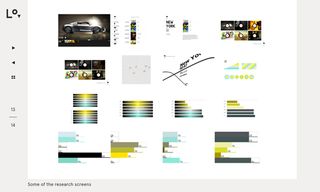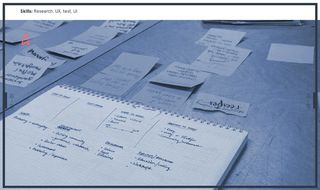How to get a job in UX
Huge recruiter Adrian Buendia shares top tips and expert advice on how to land a role in UX design.

It's not easy to get hired by a great digital agency – and the fact is it's getting exponentially more difficult every year. While I've been incredibly impressed with the advance in candidates' capabilities, I'm constantly frustrated by how badly the majority of them present themselves.
If there are two hundred other very talented people applying for the same job as you, how do you convince me that YOU are the killer talent I'm looking for?
The good news is there's a lot you can do to stand out, tell your stories better, and crucially; look more attractive than others who have superior skills. As every good UX designer should know; it's all in the presentation.
First of all: Do it yourself
Make your own portfolio. Build your own site. Use it as an opportunity to demonstrate what a blisteringly good coder you are. Make it fun, interactive, responsive – this is the one time you'll have an open brief to do what you want, so grab it with both hands. Every other project in your portfolio will have been affected and guided by clients, colleagues, and budgets – but the portfolio itself is all you.
Show us what a magnificent self-starter you are. Show us what you can do with an open brief. Show us you give a shit.
There's nothing wrong with sites like Behance or Dribble, etc – but you'll be one of dozens using that framework. When you find yourself in an interview talking about how you actually created your portfolio...you're off to a great start.

You've got your show-stopping portfolio. What’s in there?
Just showing finished webpages looking nice and shiny on devices is not enough. It tells me very little. This is a big problem with most of the portfolios I see – there's no context, no process, no thinking.
Explain your roles, include some sketches. Show your crazy notes on how you created or helped create this amazing digital product. Showing process is king of portfolios. That doesn't mean you need to scan and post every note, but choose the essential ones that tell the story of the work.
Bear in mind that a portfolio for getting hired is different than one for getting freelance work. We're experts and we want to see your thinking - the directions you took, and how you got to the final product.

Lastly, do your research
A cold "to whom it may concern" cover letter is lazy. You have the greatest cheat sheet ever right at your fingertips: the Internet! Stalk, lurk, research who your audience is. Recruiters are some of the most visible faces on LinkedIn so there's no excuse for not getting the right name.
And there's no reason to stop there: personalize your application. You could be competing against people going offline and hand delivering portfolios in custom jackets with a melted wax blot of the company's logo.
Don't let competition disillusion you – use it to stoke the fires of your creativity
Got friends in high places? If not, take the time to get to know the people who work here. We want to work with people who want to work with us and a personal referral will go a long way.
Remember, the competition is fierce and uncompromising; full of talented people busting their ass to claim each opportunity. But don't let that disillusion you – use it to stoke the fires of your creativity and invention, and stop at nothing to stand out, to get noticed, and to gain that vital edge that makes all the difference.
Words: Adrian Buendia
Images: Lorenzo Verzini, Aurélien Trichereau
Adrian Buendia is an in-house recruiter for digital agency Huge and last year was voted the top startup recruiter in the UK on Listly.
Like this? Read these!
- The designer's guide to working from home
- Brilliant Wordpress tutorial selection
- Our favourite web fonts – and they don't cost a penny

Thank you for reading 5 articles this month* Join now for unlimited access
Enjoy your first month for just £1 / $1 / €1
*Read 5 free articles per month without a subscription

Join now for unlimited access
Try first month for just £1 / $1 / €1
Get the Creative Bloq Newsletter
Daily design news, reviews, how-tos and more, as picked by the editors.
The Creative Bloq team is made up of a group of design fans, and has changed and evolved since Creative Bloq began back in 2012. The current website team consists of eight full-time members of staff: Editor Georgia Coggan, Deputy Editor Rosie Hilder, Ecommerce Editor Beren Neale, Senior News Editor Daniel Piper, Editor, Digital Art and 3D Ian Dean, Tech Reviews Editor Erlingur Einarsson and Ecommerce Writer Beth Nicholls and Staff Writer Natalie Fear, as well as a roster of freelancers from around the world. The 3D World and ImagineFX magazine teams also pitch in, ensuring that content from 3D World and ImagineFX is represented on Creative Bloq.
